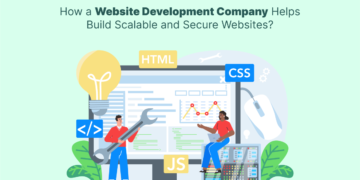Developing a mobile app for a handyman service is a smart investment for businesses aiming to streamline operations, connect with modern users, and stay competitive in the home service market. But before you dive into the process, it’s important to know how much it will cost—and more importantly, what influences those costs.
Unlike off-the-shelf solutions, custom-built handyman apps vary widely in price depending on many technical and strategic factors. To help you plan better, here’s a detailed explanation of the top 10 elements that shape the cost of building a handyman service app.
1. Features and Functional Scope
One of the first things that affect cost is the number and complexity of features you want to include. A basic app with just booking, service listings, and contact options is more affordable than a full-fledged platform with user profiles, live chat, real-time updates, payment systems, ratings, notifications, and admin control.
More features require more development time, UI/UX design, backend integration, and testing—each of which adds to the overall price tag.
2. Development Approach: Native or Cross-Platform
The type of app you choose to build plays a major role in determining cost. You have a few options:
- Native apps for iOS and Android are built separately, delivering excellent performance but with higher development time and cost.
- Cross-platform apps (using frameworks like Flutter or React Native) allow developers to reuse code across platforms, saving both time and money.
- Hybrid apps are faster to build but may not perform well for apps requiring complex interactions or animations.
If budget is limited but you want to target both Android and iOS, cross-platform development is a cost-effective middle ground.
3. User Interface and Experience Design
A well-structured and visually appealing UI matters more than people think. It’s what makes users stick, trust, and engage with your app. But crafting a professional and intuitive user interface requires time from experienced designers, especially when you include customized elements, illustrations, or motion effects.
Apps that look and feel modern tend to cost more, but they also attract better user engagement and satisfaction in the long run.
4. Backend Architecture
Every mobile app needs a strong backend system to function smoothly. This is the part of the app that manages user data, service requests, provider info, transaction history, and more.
If your app needs to handle real-time bookings, schedule coordination, notifications, and user feedback, you’ll require a powerful backend setup. This includes secure APIs, databases, cloud storage, and server configuration—all of which add to development and hosting costs.
5. App Panels for Different User Roles
Most handyman apps need more than just one interface. Usually, you’ll need:
- A customer panel for browsing, booking, and payment
- A service provider panel for managing requests and schedules
- An admin panel for overseeing operations, users, and reports
Each of these panels has separate logic, workflows, and functionality, which multiplies the design and coding effort.
6. Third-Party Tools and Integrations
To speed up development and add advanced capabilities, many apps use third-party services. These might include:
- Maps and location tracking (e.g., Google Maps)
- Payment processing (Stripe, PayPal, Razorpay)
- Push notifications (Firebase)
- SMS or OTP verification (Twilio)
- Social media login (Google/Facebook)
Using these tools helps save time but they often come with integration charges and recurring subscription fees that contribute to the total cost.
7. Real-Time Features and GPS Functionality
Want your users to track the service provider’s location in real time? Or let providers accept or reject jobs instantly?
These features require complex coding, location-based APIs, and socket programming. They also place more demand on your app’s backend infrastructure. Real-time features offer better user convenience but significantly increase development time and cost.
8. Platform Deployment and Compatibility
Launching your app on Google Play and the App Store means following specific platform requirements. Each store has its own set of technical standards, design rules, and review processes.
Developers must ensure your app complies with guidelines on privacy, security, payments, and performance, which often requires additional testing and tweaking—translating into more billable hours.
9. Ongoing Maintenance and Updates
App development doesn’t end after launch. Technology, user expectations, and OS platforms evolve continuously. You’ll need to update your app regularly to fix bugs, enhance features, and stay compatible with newer devices.
It’s recommended to allocate about 15–20% of your total development budget for annual maintenance, including server costs, updates, and support.
10. Development Partner’s Location and Experience
Finally, the expertise and location of your app development team influence costs significantly. Here’s a rough idea:
- Freelancers may offer cheaper hourly rates but often lack team coordination and ongoing support.
- Local agencies in the US, UK, or Australia tend to charge more but are easier to communicate with if you’re in the same region.
- Offshore companies, especially in India and Eastern Europe, provide high-quality work at lower costs without compromising on professionalism or delivery timelines.
Choosing a seasoned development company with relevant domain experience helps you avoid costly rework and delays.
Typical Cost Range of a Handyman App
Depending on the above factors, here’s a general idea of pricing:
| Component | Estimated Cost Range |
|---|---|
| Design & Prototyping | $2,000 – $5,000 |
| Core App Development | $10,000 – $30,000 |
| Backend Setup | $3,000 – $10,000 |
| Admin Panel | $2,000 – $6,000 |
| Testing & Launch Support | $1,500 – $5,000 |
| Total Cost Estimate | $18,000 – $50,000+ |
Note: These are average costs and can vary based on your specific business needs, region, and partner capabilities.
Closing Thoughts
Understanding where your money goes during handyman app development allows you to make better decisions from the start. Instead of focusing on finding the cheapest vendor, prioritize clarity in requirements, long-term scalability, and product quality.
Building a feature-rich, user-friendly, and scalable handyman app isn’t just about hiring developers—it’s about collaborating with a team that understands the home services industry and brings real value to your business.
If you’re planning to build your own handyman platform, it’s best to work with a cost-efficient handyman app development company that can translate your business vision into a reliable digital solution.
Also read about: Power Your Business Transformation with a Microsoft Dynamics Partner


























